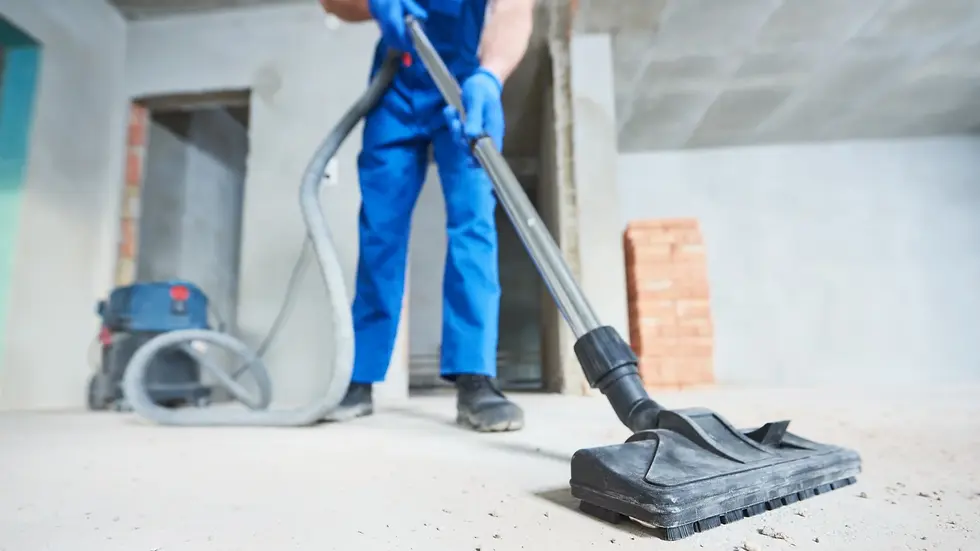The Truth About Home Remodeling: Debunking Common Construction Myths
- Nic Poncin
- Apr 24
- 5 min read
Did you know that nearly 50% of homeowners believe at least one construction myth? These misconceptions can lead to significant miscalculations, wasted money, and even unsafe living conditions. With home remodeling, understanding the facts versus fiction is crucial. In this post, we will break down the most common myths in home remodeling, focusing on kitchens, bathrooms, and more. By debunking these myths, we aim to arm you with the knowledge you need for your next home project, ensuring you make informed decisions that enhance your home without unnecessary expenses.
Introduction to Construction Myths
Homeownership comes with its fair share of responsibilities. When it comes to home renovations or construction projects, myths can complicate decision-making and lead to serious consequences down the line. Popular myths often stem from hearsay, outdated practices, or simply a lack of information. In this blog, we're set to dissect the most common construction myths and shed light on the reality behind them.

Myth #1: DIY Projects Are Always Cheaper
There’s a common belief that do-it-yourself projects save homeowners money. While DIY projects can offer benefits such as personal satisfaction and creative control, they often come with costly hidden expenses. For starters, if you don’t have the right tools, you might end up renting or buying equipment that initially seems too expensive. Furthermore, improper installation can lead to additional repair costs down the line.
Consider this: a project may seem straightforward in a YouTube video, but real-life unexpected problems can arise. Issues such as wall studs in unexpected places, electrical rewiring, or plumbing challenges can turn a simple project into a costly ordeal. Homeowners may find that hiring a professional is far more economical in the long run—especially for major overhauls like kitchens or bathrooms.
Myth #2: All Contractors Are the Same
Many people think that all contractors offer the same services for the same price. This myth can lead you to choose the wrong contractor based solely on cost, which can result in disaster. Not all contractors specialize in the same areas, and their experience levels can vary significantly.
To avoid falling into this trap, assess several key factors when selecting a contractor:
1. Specialization: Does the contractor have a focus on the type of project you want to undertake?
2. References: Do they provide references or have online reviews that highlight their work quality?
3. Licenses and Insurance: Are they licensed and insured? This protects you from liability in case of accidents on the job site.
4. Communication: Is the contractor responsive and clear about project expectations? Poor communication can lead to misunderstandings later.
Choosing a qualified contractor based on these criteria can vastly improve your project’s outcome.
Myth #3: Bigger Rooms Mean Bigger Projects
It’s a common assumption that larger rooms mean larger renovation projects. While size can influence project costs, it does not automatically translate to a more expensive renovation. For example, a small kitchen could be more costly to remodel than a larger family room due to the amount of complicated plumbing and electrical work.
Consider the following:
Complexity: Sometimes a smaller space will have more intricate details that require more labor and skill to remodel properly.
Materials: The choice of materials can impact costs regardless of the room size. High-end finishes in a small bathroom can quickly escalate costs.
Focus on the specific challenges of the project rather than just the space size.

Myth #4: Remodeling Will Always Increase Your Home's Value
While renovations can enhance your living experience, not all upgrades guarantee a return on investment. The return varies widely depending on the home’s location, the type of remodel, and current market conditions.
For example, kitchen remodeling can yield great returns. According to the National Association of Realtors, a kitchen remodel can recover about 60%-70% of its cost. Meanwhile, a high-end renovation may fall flat if the neighborhood doesn’t call for it.
To maximize your return, consider focusing on:
1. Functional Improvements: Prioritize projects that enhance livability.
2. Market Trends: Consult local real estate experts to understand which renovations hold the most value in your area.
3. Quality Materials: Investing in quality can yield higher returns, especially for key features like countertops and cabinets.
Myth #5: You Should Always Underestimate Project Timelines
A pervasive myth suggests that underestimating project timelines creates better budgeting plans. However, a more realistic timeline is essential for effective project management. Many homeowners fall into the trap of believing that renovations can happen overnight. In reality, even straightforward projects can take longer than expected due to various factors such as:
1. Permit Delays: Getting the right permits often takes longer than anticipated.
2. Unforeseen Issues: Older homes come with hidden problems like outdated plumbing or electrical systems that require addressing.
3. Labor Availability: Finding skilled labor for your specific project could cause delays.
Rather than underestimating timeframes, it's best to plan for unforeseen circumstances. Always leave some buffer time in your project timeline.
Myth #6: All Remodeling Projects Make a Mess
While it’s true that renovations can be disruptive, many contractors prioritize cleanliness and minimize mess, often implementing dust control methods, protective coverings, and encapsulated containment areas. The idea that all projects will wreak havoc on your home is false.
To mitigate construction mess:
Pre-project Prep: Discuss cleanliness protocols with your contractor.
Containment Practices: Use barriers and sheeting to keep dust away from unaffected areas.
Daily Cleanup: A responsible contractor will have a routine for clean-up, ensuring that your home is as tidy as possible at the end of each day.

Myth #7: All Home Improvements Are DIY-Friendly
There’s a tendency to assume that many home improvement tasks can be done independently. While minor repairs and aesthetic touches might be manageable for the average homeowner, significant renovations often require specialized skills.
Here are tasks better left to professionals:
Electricity: Electrical work must comply with local codes, and improper wiring can pose significant safety hazards.
Plumbing: Ensuring proper pipe configuration needs extensive expertise to prevent future leaks or pressure issues.
Structural Work: Any remodel that touches load-bearing walls should always be handled by a licensed contractor to ensure your home’s integrity.
Myth #8: Renovating Is a Quick Solution
Many homeowners dive into renovations thinking they will solve issues quickly, but remodeling is time-consuming and involves careful planning. Rushing through a project can lead to mistakes, unfinished work, or unsatisfactory results.
Instead of rushing:
Time for Planning: Spend adequate time on planning to devise a comprehensive vision for what you want.
Quality over Speed: Prioritize quality work. Remember, a well-done project lasts years, while a rushed job may require redo sooner than you think.
Wrapping Up: What’s the Takeaway?
Debunking construction myths helps homeowners make informed decisions. Knowledge of the truths surrounding home renovation instills confidence and can save you time and money. Remember:
DIY projects can escalate costs unexpectedly.
Choose a qualified contractor instead of basing decisions solely on price.
Recognize that not all renovations yield financial returns.
Allow for buffer time in project timelines.
Understand the value of professional expertise in significant repair jobs.
So now what? If you’re ready to explore remodeling options without falling trap to these myths, call or email us today at 952-994-1572 or sales@restoreandreno.com to discuss your ideas and ensure your project goes smoothly.



Comments